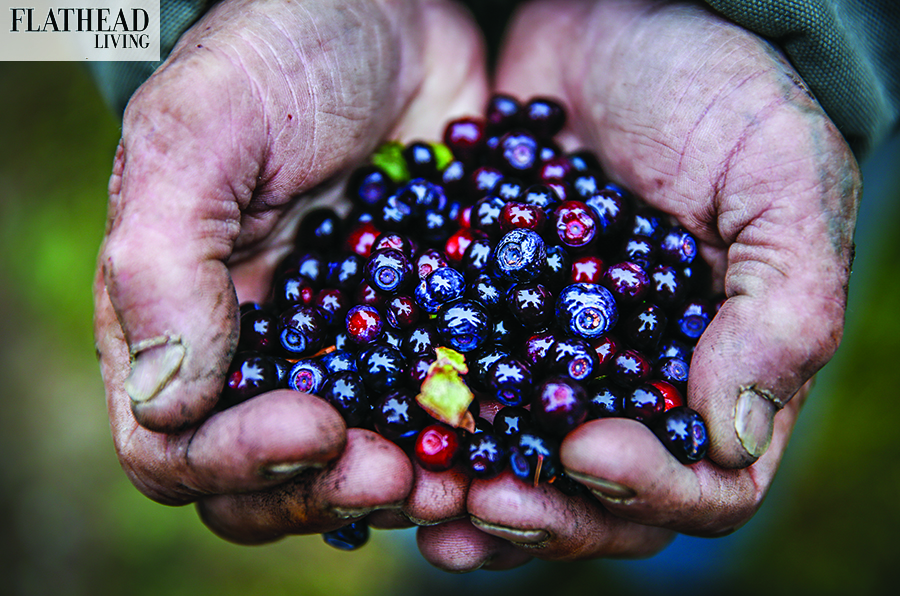Jim, a grizzled 63-year-old commercial huckleberry picker, cracks his second 16-ounce can of Budweiser of the day. He knows it’s not quite 7 a.m. yet, because the news hasn’t wafted through the scratchy speakers of his trusty FM radio with the twisted wire antenna. His slight frame rests in his favorite folding chair. Long, scraggly, gray hair and a matching beard envelop the face of a man who likes his privacy.
With cracked fingers, calloused from decades of under-the-table mechanical work, he rolls another cigarette and thanks God for the passing rain storm after two weeks of hot, dry weather. He knows from 30 years of experience picking huckleberries commercially, the combination of sun and rain will bring a plentiful purple harvest, and more cash in the pocket of his one-size-too-large Levi’s.
Flathead Valley restaurants and other local buyers pay $40 to $50 per gallon of huckleberries. The sweet, dark purple, antioxidant-rich fruit are a major vein of Montana’s tourism industry. While huckleberries grow in abundance on the steep, thickly forested mountain sides of Northwest Montana, decades of research have yet to successfully domesticate the marketable crop, leaving the laborious task of harvesting huckleberries in the wild to commercial pickers like Jim.
The lucrative, generations-old practice is secretive by nature. Many of the huckleberries that make their way into hundreds of Montana-made products every year are harvested within the 4.6-million-acre expanse of the Flathead and Kootenai national forests. Pickers are tight-lipped about the specific locations of the best huckleberry patches.
While U.S. Forest Service regulations prohibit the sale of “any merchandise or service unless authorized by Federal law, regulation or special use authorization,” no clear permitting process exists through which pickers can legally harvest. The Flathead National Forest permits 10 gallons per person, per year for personal use, but offers no further information for commercial pickers to obtain permits. The Kootenai National Forest has even fewer guidelines.
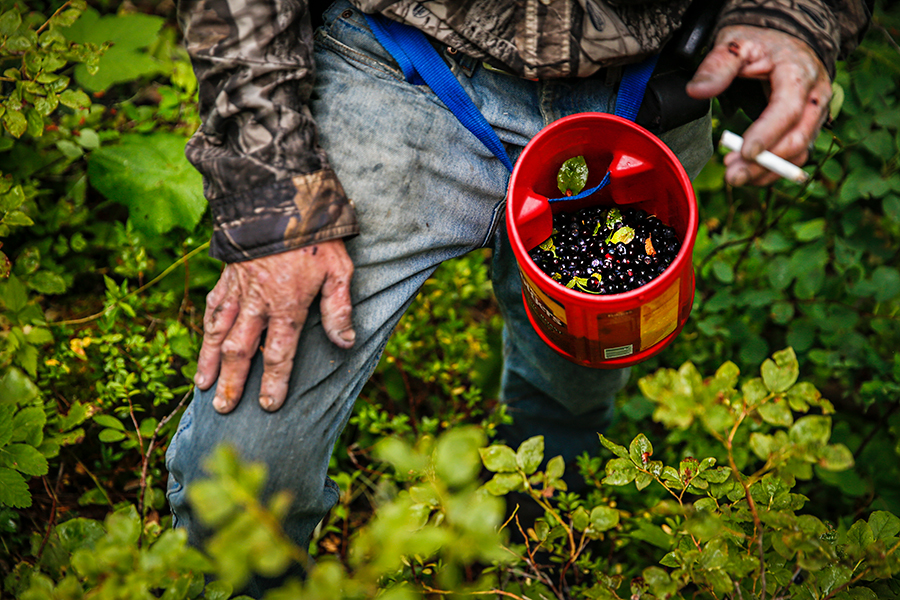
The untamed lifestyle of commercial huckleberry picking attracts a specific kind of person, one who is committed to roughing it in the woods for two to three months at a time and is undeterred by the legal gray areas. Pickers like Jim are about as likely to offer up their last names or pose for an identifying photograph as they are to give away their favorite locations.
“Everybody pictures you out in a sunhat in a flower field, but it’s nothing like that,” Jim says.
Jim staked out a ridge in late July. For 14 days he camped along the roadside before moving to another location farther north. The red tent and blue canopy look like a campsite to any passing tourist. To other commercial pickers, it’s a sign of claimed territory. Other rough-cut mountain men shoot jealous, hostile glances at him as they drive by. Some stop to chat, but with the palpable tension of frenemies.
“We almost get in gun fights sometimes,” Jim says. But disputes are usually resolved over a shared bowl of cannabis.
Competition with other pickers is just one of the dangers Jim might encounter in the forest. He explains the most important tools in his medbag are a tampon, to stop the bleeding from a bullet wound, and plastic wrap to stanch the gaping wounds of a bear mauling — although one of the gallon-sized freezer bags he uses to store berries would work in a pinch.
In the months leading up to hibernation, a grizzly bear may consume up to 30,000 berries a day, or about 18 gallons. By comparison, Jim picks about 15 gallons in two weeks. He’s only been bluff charged three or four times, but a day rarely goes by that he doesn’t spot an overturned rock or berry-filled scat. You’ll smell a bear long before you see or hear one, he explains, likening the odor to that of rotten garbage or a USDA pit toilet.
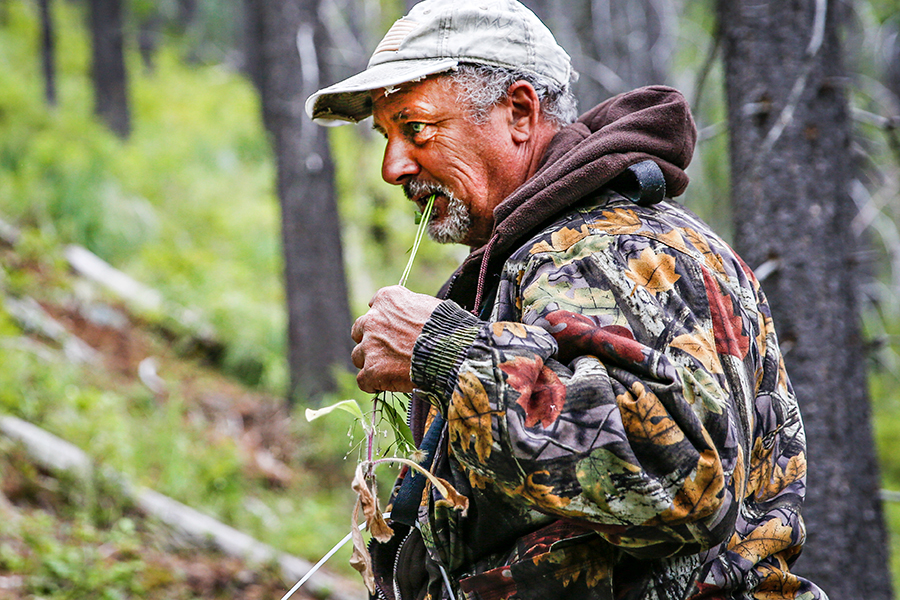
However, the predators that Jim fears most every time he hears a twig snap are mountain lions.
“Everybody forgets about cats,” he says. “They don’t hunt alone. Siblings will stay together for years. They’ll track you and stalk you.”
Predators are the reason Jim sleeps in the bucket seat of his ‘97 Chevy pickup with a handgun and a 12-gauge break-action shotgun within reach. Stretching out in the tailgate next to the burgeoning cooler of huckleberries on ice would be “like sleeping in a lunch box” for bears.
Yet the demand for huckleberries and the simple lifestyle are what draw Jim to the woods every summer.
Buyers find sellers mainly through word of mouth or Facebook posts. Dannette Sefcett, owner of Whitefish Handcrafted Spirits, is Jim’s largest customer. She buys all the huckleberries she can get her hands on from local pickers to support her restaurant and distillery. Sefcatt squeezes the juice from 1 to 1.5 gallons of huckleberries to flavor one case of her huckleberry reserve or liquor. Between the distilling process and various food items on her menu, Sefcatt goes through roughly 600 pounds of huckleberries a year.
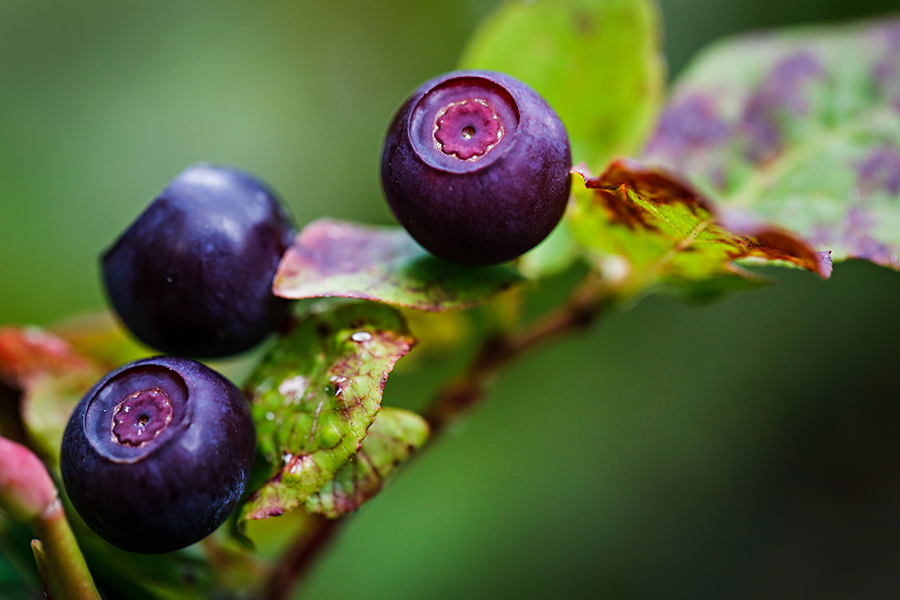
“A huckleberry says Montana,” she says. “We love our state. If we’re going to do a Montana local product, we want it to be as authentic as we can make it.”
Jim is nothing if not authentic.
Every morning he wakes up before the sun rises, starting the day with a cup of instant coffee. His chipped ceramic mug boldly states: “Honorary Member of the Old Man’s 4H Club: hernia, hiccups, hemorrhoids, and heartburn.”
After a couple of beers and cigarettes, and maybe a joint, Jim secures a gallon-sized Folgers coffee can around his waist with a nylon strap and begins to climb. He leaves any huckleberries growing within 30 feet of the roadside for kids, tourists and the elderly. Jim is no spring chicken himself, yet he can fill a gallon-sized bucket in an hour, twice as fast as a less-experienced man half his age.
Some pickers use damaging tools like rakes or beaters (a tennis racket wrapped in canvas) to speed up the picking process. Jim picks by hand. “The first line of quality control is on the bush,” he explains, tickling the underside of a branch and plucking a berry with a gentle roll of his fingertips. He leaves squished, underripe, sun-dried or scabbed huckleberries on the bush. Scabs are the marks of spiders and bees enjoying the fruits.
“Everything in this forest eats these berries,” Jim says. “If you drop a berry on the ground, there’s two reasons why you don’t pick it up. Number one is, you could pick six more berries in the time you took to pick it up. And second is, even the Lord says in the Bible, you gotta leave a certain amount for the creatures on the ground.”

The second line of quality control is Jim’s mother-in-law who washes the berries in a strainer with a pinch of salt, to kill any bacteria or mites, before piling them into gallon-sized freezer bags for buyers.
Jim’s wife, Honey, meets her husband in the woods every weekend, bringing supplies and fresh blocks of ice for Jim’s cooler and leaving with gallons of huckleberries to be cleaned and sold in town. Jim says the most important tools you need for huckleberry picking are a firearm, a freezer and a “runner” to bring supplies and deliver berries.
Honey grew up on a homestead in Fortine without running water until she was 14 years old. “The creek was our running water,” she shrugs. As a child, she was the type of girl to chase her siblings around with jars of spiders. Now, at age 62, she quietly tiptoes through the woods without bear spray or a gun and always comes out unscathed, earning her the nickname “the bear whisperer.” She can identify any flower or tree in the forest and tell you its medicinal use, and she knows the forest’s secrets, such as the biggest huckleberries grow in the shade of spruce trees.
Honey picked Jim up hitchhiking in November of 2013. They fell in love.
On his nights alone, Jim scratches love notes to his wife in his spiral-bound notebook, describing paintbrush skies, a moon so bright it casts shadows and an unfortunate horse fly bite to the rear after stripping down to wash in the creek.
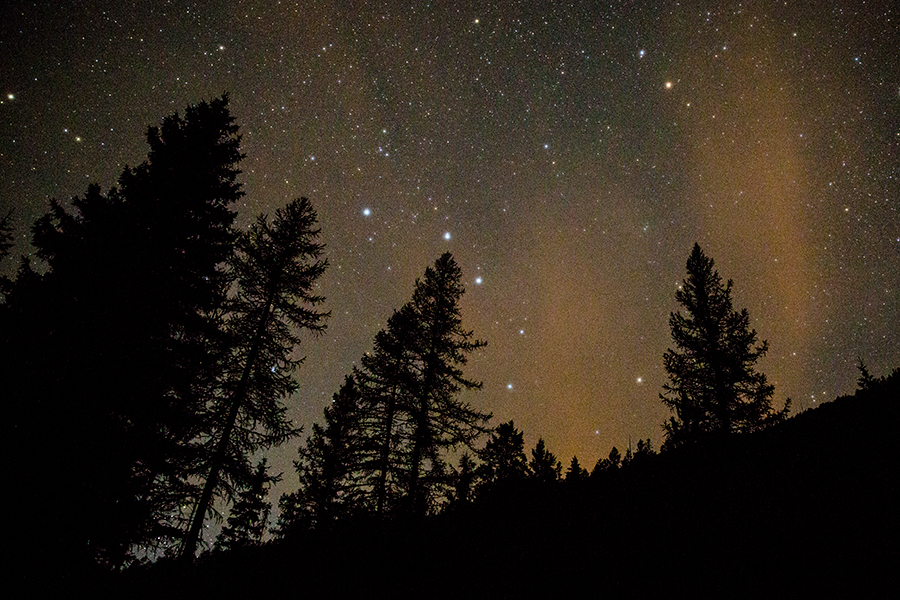
“I see profound stuff in the forest. How can you beat living like this?” he writes.
It’s around noon when Jim scrambles off the hill back to camp. He knows this because his favorite radio program, Lunch with Led (Zeppelin), which he calls the “hour of the gods,” blares as loudly as the old radio speakers will allow. His purple fingers dance across imaginary strings as he plays air guitar in the middle of the dirt road.
He pours the morning’s harvest into a gallon-sized baggie and sets it on ice. If more than three leaves make it into his bucket, he hears the voice of his picking mentor and longtime partner in his head. You bringing out the whole forest, Jim?
He cracks open another beer for lunch. “My breakfast, lunch and dinner come in a can,” he says with a grin.
Pickers and law officials seem to share an unspoken agreement. “If you keep your camp right, they don’t bother you,” Jim says. “They know what I’m doing.” He rarely lights a campfire and never leaves out food scraps or garbage that could attract animals. “As long as you make sure the rangers and the animals are happy, everybody is happy,” he says.
Pickers could be charged with violating any number of Forest Service regulations, but discretion is left up to the particular law enforcement officer, says Flathead National Forest Public Affairs Officer Lauren Alley.
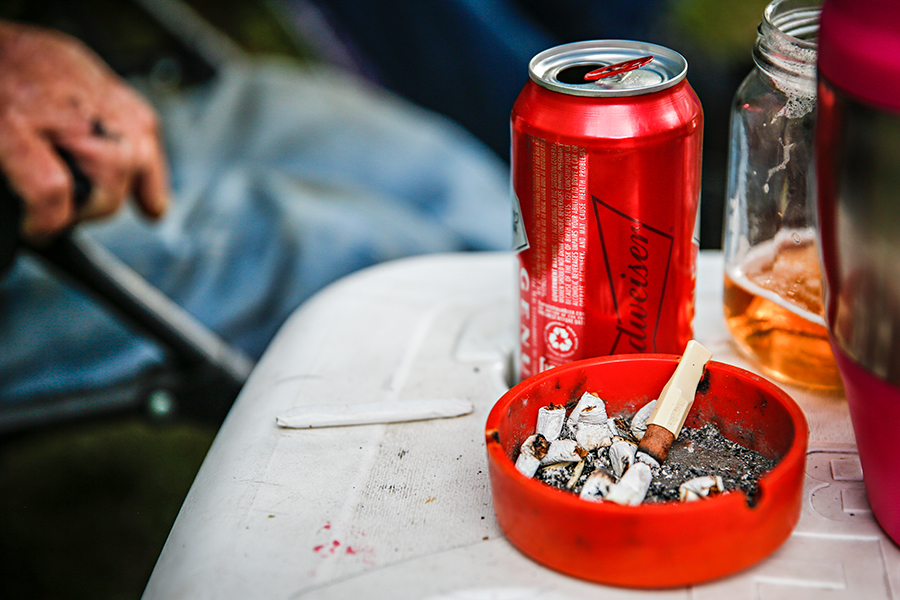
“The officer would evaluate the totality of the circumstances to identify what if any violations occurred,” Alley said.
As Jim starts to ascend for another round of afternoon picking, he hears shouts from the roadside below. His friends Dave and Jesse from Trego have made the drive up the mountain to bring him supplies and gather their own berries for personal use. Jesse, 40, has brought his wife and 5-year-old daughter, the same age Jesse was when he started picking. The men chatter giddily as they comb the slopes.
“It’s inevitable you’ll end up getting a purple butt and purple knees,” Jesse says. “I’ve had it where you go to sleep at night and all you see is buckets of berries.”
“The first inch and the last inch are the hardest,” adds Dave, who returns to the same canyon where his father and grandfather taught him how to pick. “The best part is when you stop hearing the sound of the berries drop into your bucket. That means you’ve picked enough to fill the bottom.”
Any experienced picker will tell you, even small berries fill the bucket.
Dave recounts a time he fell coming downhill with a bucket full of berries. “Three or four hours of hard work gone. I think of people who have been picking berries for thousands of years and how the same thing happened to them. They got purple fingers. They stumbled and dropped their berries.”
Jesse’s dogs circle close by, snacking on the purple fruits. “I look where she’s eating; she likes the bigger berries,” he says, gesturing to the happy huckleberry hound. The men agree a dog is your best line of defense against a bear. An attentive pooch will catch wind of a creeping bruin long before a picker will.
Dusk falls and the stars come out. The old FM radio ekes out the beat of Whitesnake’s “Here I Go Again.” Plastic cups of homemade dandelion wine are passed around.
Honey implores Jim to come to tomorrow’s family gathering. But that would mean moving his truck and risk losing his spot. Jim looks up at his wife, softening his voice: “You know I love you. But I ain’t leaving this world for that world.”
Editor’s Note: Some names have been changed to protect the identity of sources at their request.
Jessie Mazur is a writer and photographer from Whitefish whose work can be found at www.picturemt.com. She lives in a cabin in the woods with her 2-year-old daughter and their dog.
